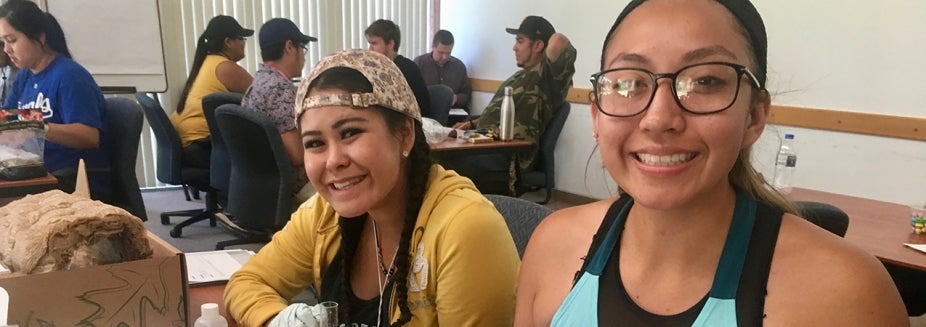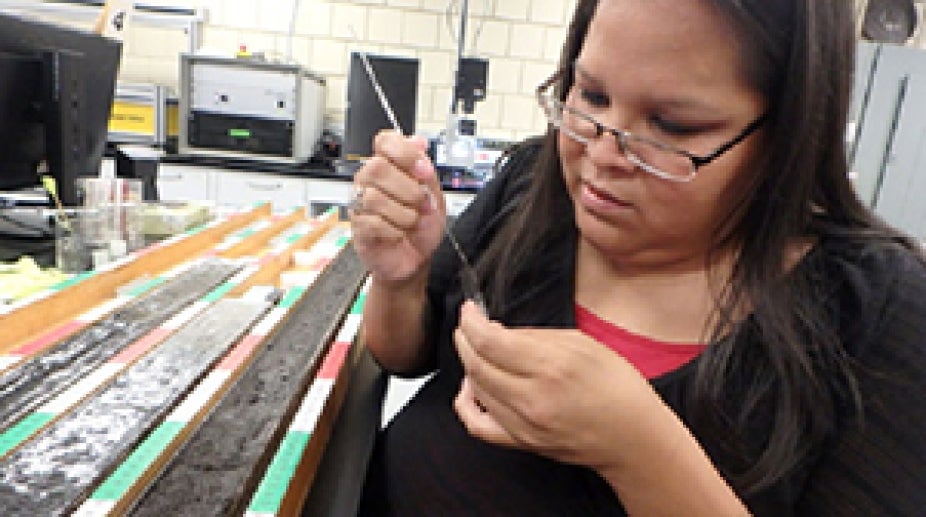Recruiting Students

Index of Topics
-
PREPARE A SHORT DESCRIPTION OF YOUR REU OPPORTUNITY
-
STRATEGIES FOR RECRUITING APPLICANTS
-
POST YOUR REU OPPORTUNITY ON KEY FACEBOOK PAGES AND WEBSITES

In writing a proposal for an REU site or supplement, it’s important to have a recruitment strategy, including a clear implementation plan. Passive recruitment strategies tend to be ineffective.
Start to develop connections with faculty at other institutions, including minority-serving institutions (MSIs) in your region. Pick up the phone and call faculty and chairs to find out if they have students to recommend and what you are planning in your opportunity.
Here are some steps:
PREPARE A SHORT DESCRIPTION OF YOUR REU OPPORTUNITY
You will need to be able to describe your REU program to share it with faculty and students, in emails, flyers, or on websites. Include the following information:
- List your institution and location, the discipline of research, and the dates of the program.
- Give a brief description of the program and what the student will get out of the experience (e.g. Students will participate in doing oceanographic research, and learn how to communicate their research results to a scientific audience).
- List the characteristics of the student being sought, including:
- Academic background (e.g. majors or science background)
- Academic level (e.g. 2nd year undergraduate)
- Type of institutions student is at (e.g. community college or 4 year college)
- Specify the support that students will receive, including the pay or stipend, travel, housing, and mentoring.
- Be inviting and inclusive in the language used in your description. Look at other REU websites to see how inclusive they seem to you.
- Include the application deadline. Many REUs use a deadline of Feb. 1 or 15, for example.
- In emails or flyers, include a link to your webpage, a photo, and logo for your institution and for NSF.
STRATEGIES FOR RECRUITING APPLICANTS
- Check whether your REU is listed on the NSF REU website. Does it link to your REU website properly? Check it each year, and each time you make a change to your REU web address or PI. To request a correction, contact your NSF Program Officer:
- AGS: Amanda Adams (amadams_at_nsf.gov)
- EAR: Lina Patino (lpatino_at_nsf.gov)
- OCE, PLR: Lisa Rom (elrom_at_nsf.gov)
- Actively engage with faculty and students at other institutions. Experience shows that many students in REU programs learned about the opportunity from a professor or peer, although many also find the opportunity through a web search. Students from underrepresented groups are more likely to learn about it from a professor. To successfully recruit students into your program, it is important to make connections with faculty, and if possible, students:
- Contact faculty and chairs at other universities and community colleges via individual emails and, better yet, phone calls or meetings.
- Give a short 5-10 minute presentation about your REU opportunity in a few STEM classes at different campuses.
- Ask faculty to tell you about students with great potential, and introduce you to them.
- Share your opportunity via email with faculty and students.
- Participate in meetings like SACNAS, NABG, and AISES to develop connections with faculty who teach students from underrepresented populations.
- Contact former REU interns or students via Facebook (etc.) and ask them to tell friends about the opportunity. Students can be excellent recruiters.
- As you develop these relationships, faculty will be more comfortable recommending students to your program, and you will be able to support students in a more customized way, knowing more about them.
- Include students from community colleges and minority-serving institutions in your recruitment plan. There is a national incentive to bring community college students into the science workforce. Many of these students have not had the opportunity to attend four-year colleges (e.g. for financial or other reasons) but have strong potential.
- Minority-serving institutions: Check whether any of these are located near your institution. They are listed by state as follows:
- HBCUs or Historically Black Colleges & Universities (see map of HBCUs)
- HSIs or Hispanic-Serving Institutions
- Tribal Colleges (see map of Tribal Colleges)
- Community Colleges: These are listed by state at the American Association of Community Colleges website.
- Minority-serving institutions: Check whether any of these are located near your institution. They are listed by state as follows:
POST YOUR REU OPPORTUNITY ON KEY FACEBOOK PAGES AND WEBSITES
Here are instructions on posting opportunities to minority serving science societies including AISES, NABG, and SACNAS, as well as other science organizations.
- AISES (American Indian Science & Engineering Society): Send a description (200 words), link, and contact to Ms. Lisa Paz at lpaz(at)aises.org. This goes out to 11,000 members including faculty and students at Tribal Colleges.
- NABG (National Association of Black Geoscientists): Go to their Facebook page, like it, and post your opportunity there
- SACNAS (Society for the Advancement of Chicano and Native American in Science):
- First create an account (or login) on their website.
- Next go to submit opportunities online. It does not cost to post student opportunities. They will then approve the request to post.
- IBP (Institute for Broadening Participation) Pathways to Science database: This reaches many students from underrepresented populations.
- Post your REU description on the Facebook page and job website of science organizations in your field, whether that is AMS, GSA, ASLO, or AGU.
- Be strategic about where you post ads, as some websites yield little to no applications and are not worth the effort.